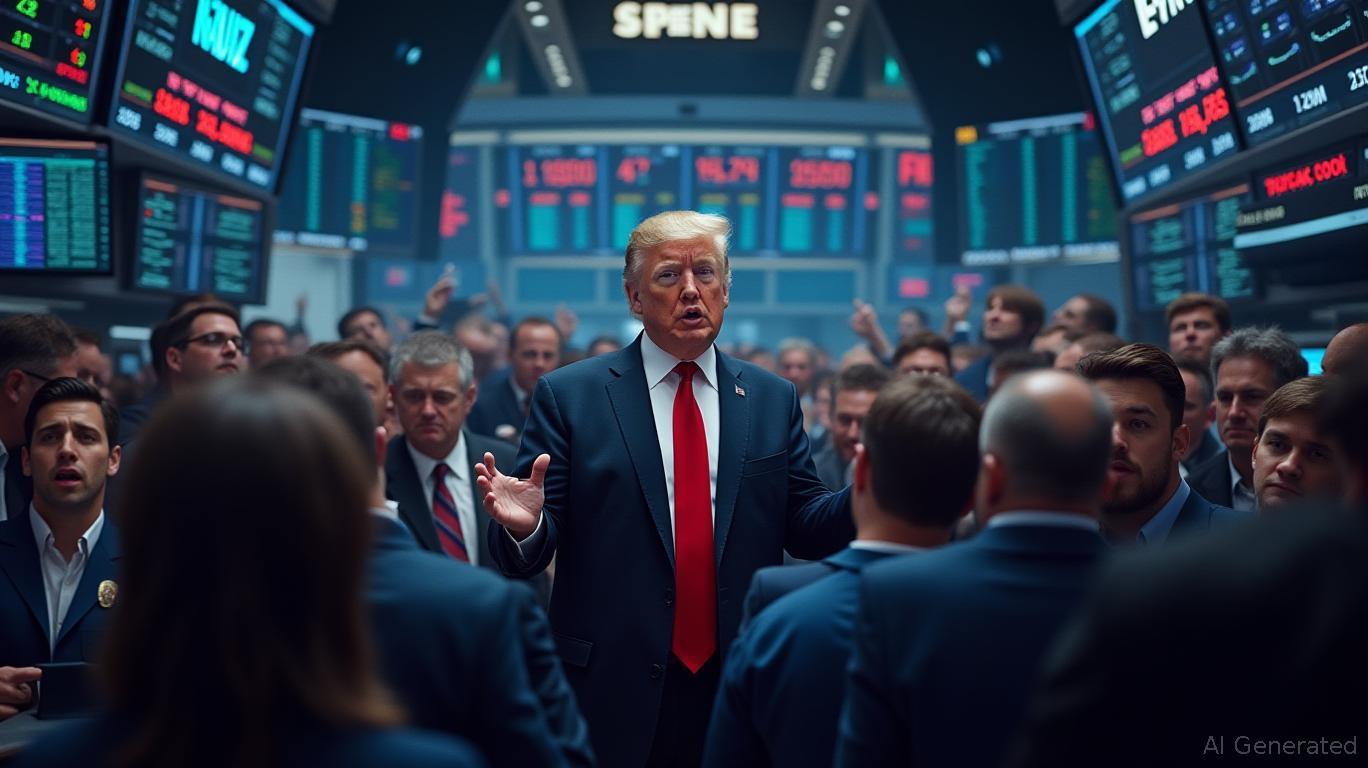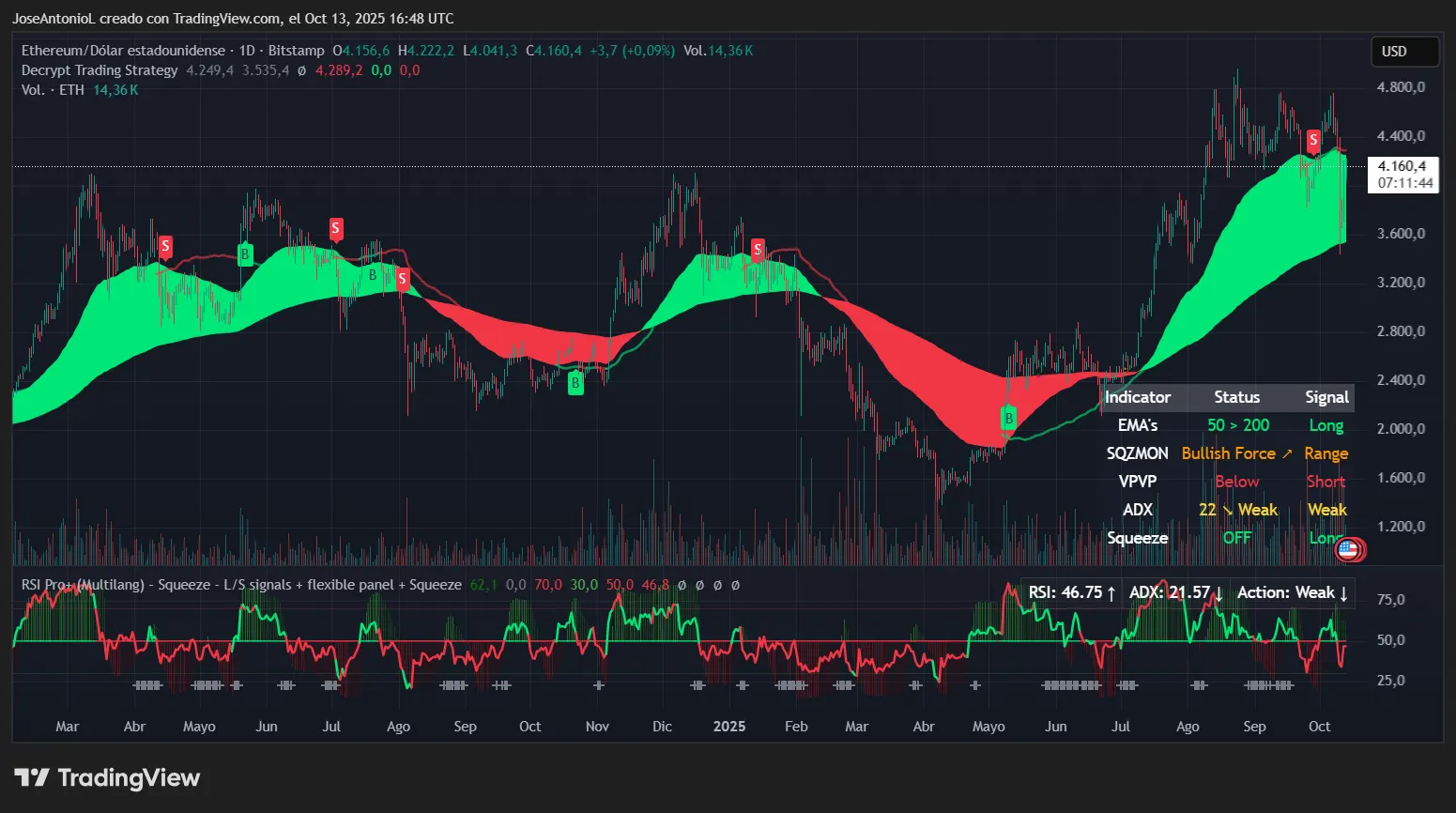On October 10,2025, the cryptocurrency world was rocked by a seismic event: President Donald Trump’s abrupt announcement of a 100% tariff on all Chinese imports triggered an immediate and dramatic reaction across global markets. Nowhere was this more visible than in the crypto sector, where prices unraveled with breathtaking speed. Bitcoin plunged from $121,420 to a low of $104,000 in mere minutes before stabilizing near its current value of $111,926.00. Ethereum and leading altcoins followed suit, with some tokens suffering catastrophic losses of up to 80% on certain exchanges.
The Anatomy of a Crypto Flash Crash
This wasn’t just another volatile day for digital assets. The sheer scale of the sell-off was historic: over 1.6 million positions were liquidated, erasing more than $19 billion from the market in hours. For both new and seasoned investors, it was a stark reminder that crypto is uniquely sensitive to shocks far beyond its own ecosystem.
The trigger? Geopolitical tension. Trump’s tariff threat against China amplified fears about global trade and liquidity – but crypto’s reaction was amplified by leverage and herd behavior. As panic set in, automated stop-losses and margin calls accelerated the cascade. This is what analysts call a flash crash: an ultra-rapid drop in price caused by sudden selling pressure, only partially reversed once the initial panic subsides.
Why Did Crypto React So Sharply?
Unlike traditional markets, cryptocurrencies operate around the clock with minimal regulation or circuit breakers to halt trading during extreme volatility. This means that when fear strikes – especially over issues like tariffs or capital controls – there’s little to stop prices from free-falling until buyers step back in.
The recent crash highlighted several key dynamics:
- Geopolitical Sensitivity: Crypto markets are acutely reactive to major geopolitical events like trade disputes or regulatory crackdowns.
- Leverage Amplifies Pain: Many traders use borrowed funds (leverage) hoping for outsized gains. When prices fall rapidly, these positions are forcibly closed (liquidated), adding fuel to the fire.
- Panic Selling: With no central authority to intervene, waves of panic can sweep through exchanges globally in seconds.
The result? Even experienced investors can be caught off guard by how quickly sentiment shifts – and how much capital can be wiped out almost overnight.
Bitcoin Maintains Position Above $100,000 Despite Turbulence
If you’re onboarding into crypto or advising others on protecting crypto investments, these events are more than headlines; they’re essential case studies in risk management and emotional discipline.
A trader who reportedly made $160 million shorting Bitcoin ahead of Trump’s announcement doubled down after the news broke, sparking debate about whether some insiders had advance warning (source). While such speculation remains unconfirmed, it underscores how quickly fortunes can change in this arena.
Bitcoin (BTC) Price Prediction 2026-2031 After the 2025 Flash Crash
Expert forecast based on post-crash market dynamics, geopolitical risks, and adoption trends.
| Year | Minimum Price | Average Price | Maximum Price | Potential YoY Change | Market Scenario Insights |
|---|---|---|---|---|---|
| 2026 | $89,000 | $120,000 | $142,000 | -5% to +7% | Market recovers from 2025 crash, but remains volatile as tariffs and global tensions persist. |
| 2027 | $102,000 | $136,500 | $162,000 | +10% to +15% | Stabilizing macro environment and renewed institutional interest drive moderate growth. |
| 2028 | $115,000 | $156,000 | $185,000 | +12% to +15% | Mainstream adoption increases, halving cycle impact begins, regulatory clarity improves. |
| 2029 | $132,000 | $178,000 | $212,000 | +14% to +17% | Bullish momentum from halving, increased corporate treasury adoption, but competition from altcoins. |
| 2030 | $151,000 | $203,000 | $242,000 | +14% to +16% | Technological improvements and Layer 2 growth fuel network utility, but volatility remains. |
| 2031 | $169,000 | $225,000 | $270,000 | +11% to +13% | Mature market phase, global macro stability, but regulatory headwinds may limit upside. |
Price Prediction Summary
Bitcoin is expected to gradually recover from the 2025 flash crash, with price growth resuming as macroeconomic and geopolitical conditions stabilize. The next six years will likely see both bullish and bearish cycles, driven by global adoption, regulatory clarity, and technological evolution. Investors should expect ongoing volatility but also potential for new all-time highs as the market matures.
Key Factors Affecting Bitcoin Price
- Geopolitical events (e.g., trade wars, tariff announcements) causing sudden volatility spikes.
- Institutional adoption and capital inflows/outflows.
- Regulatory developments in major economies (US, EU, Asia).
- Bitcoin halving cycles and their impact on supply/demand dynamics.
- Technological upgrades (e.g., Layer 2, scalability, security enhancements).
- Competition from alternative cryptocurrencies and tokenized assets.
- Global macroeconomic trends (inflation, interest rates, fiat currency stability).
- Market sentiment and risk appetite among retail and professional investors.
Disclaimer: Cryptocurrency price predictions are speculative and based on current market analysis.
Actual prices may vary significantly due to market volatility, regulatory changes, and other factors.
Always do your own research before making investment decisions.
Lessons in Risk Management for Every Investor
The October 2025 flash crash is more than just a story about numbers; it’s a wake-up call for everyone involved with digital assets. Here are some actionable insights for both new entrants and experienced hands:
Key Lessons from the Trump Tariff Crypto Flash Crash
-

Stay Informed on Geopolitical Events: The October 10, 2025, announcement of a 100% tariff on Chinese imports by President Trump triggered a sharp crypto market downturn. Monitoring global news and policy changes is crucial for anticipating market reactions.
-

Prioritize Risk Management Tools: Over $19 billion in liquidations occurred as Bitcoin fell from $121,420 to $104,000 within minutes. Use stop-loss orders and limit leverage to protect against sudden, large losses.
-

Prepare for Extreme Volatility: The crypto market’s rapid swings, such as Bitcoin’s 14% plunge and Ethereum’s 12.2% drop to $3,436, highlight the need to avoid impulsive decisions during high volatility.
-

Diversify Across Asset Classes: Altcoins lost up to 80% on some exchanges, emphasizing that relying on a single asset class increases risk. Diversification can help cushion portfolio losses during market shocks.
-

Maintain a Long-Term Perspective: Despite short-term turmoil, the crypto market often recovers. Focusing on long-term goals can help investors avoid panic selling and benefit from future growth.
For those just beginning their crypto journey, the temptation to chase recent highs or over-leverage positions can be overwhelming. Yet, as the Trump tariff crypto impact demonstrated, markets can turn in an instant, punishing complacency and rewarding preparedness. The flash crash of October 2025 was not an isolated event but part of a recurring pattern in crypto: sudden external shocks triggering chain reactions that ripple through every corner of the market.

Seasoned investors recognize that crypto volatility onboarding is not merely about learning how to buy or sell digital assets. It’s about internalizing the reality that price swings of 10%, 20%, or even more are not outliers, they are the norm. Protecting crypto investments requires more than just technical know-how; it demands a mindset geared to withstand uncertainty and act rationally under pressure.
Protecting Crypto Investments: Practical Steps
The best defense against market turmoil is a proactive approach to crypto risk management. Here are some practical steps every investor should consider:
It’s also crucial to remember that diversification isn’t just about holding multiple cryptocurrencies. Spreading exposure across different asset classes, stocks, bonds, commodities, can further cushion against sector-specific shocks. This holistic approach is especially relevant as digital assets become increasingly intertwined with global macroeconomic events.
Learning from Market History
The October 2025 flash crash will be analyzed for years to come. It serves as a vivid reminder that while technology and innovation drive this industry forward, human psychology remains at its core. Fear and greed move markets faster than any algorithm can predict.
For new investors, this episode is an opportunity to reflect on your goals and risk tolerance. Are you prepared for sudden downturns? Do you have a plan if prices fall sharply again? For veterans, it’s a chance to revisit strategies, tighten stop-losses, reduce leverage, and stay vigilant for signs of systemic stress.
“Extreme volatility is part of the crypto landscape, but risk management is your only real edge. ”
The market has since stabilized somewhat, Bitcoin currently stands at $111,926.00, still above the psychologically significant $100,000 level. Yet if history teaches anything, it’s that new shocks will come. The difference between surviving them and being swept away lies in preparation, discipline, and perspective.



